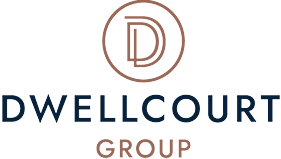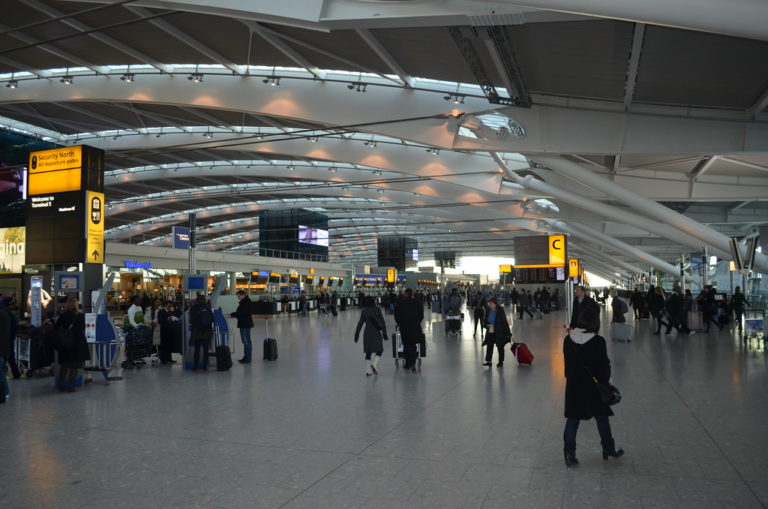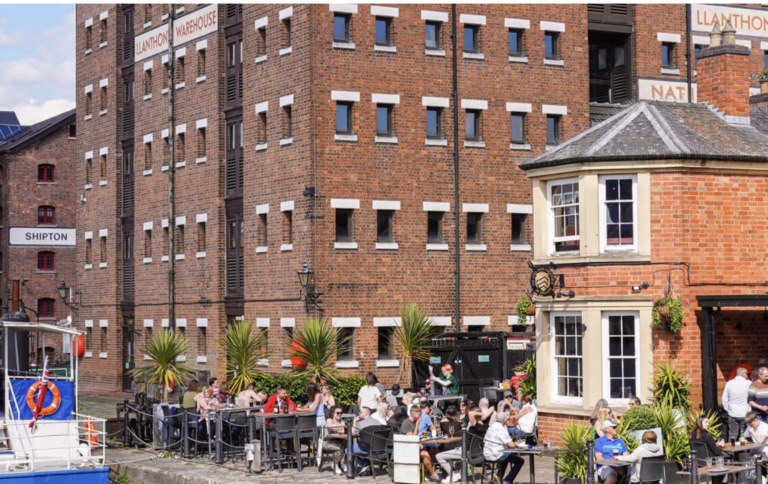Oxford: An aspirational city of ‘dreaming spires’?

As a professional wordsmith I naturally admire Oxford, writes John Burbedge – a city that printed its first book in 1478 two years after Caxton’s printing press; produced the Oxford English Dictionary first edition in 1884; and apparently has the world’s most published writers per square mile.
Oxford has many more unique claims to fame and admiration. For example, it is home to the oldest university in the English-speaking world and The Ashmolean, the world’s oldest purpose-built museum, plus the Oxford University Press (OUP) now printing for scholarly readers in over 40 languages and achieving the widest global presence of its type (no pun intended).
Among many films, Oxford was also a location for three Harry Potter blockbusters, but, more importantly, real-life Oxford is today the UK’s top city for good business growth – pipping Reading for the second year running.
According to the 2017 PwC-Demos ‘Good Growth for Cities’ index measuring economic wellbeing, Oxford and Reading maintained the substantial gap between themselves and other large UK cities, “... reflecting their continued improvement in jobs, income, and skills. Both cities also perform strongly on new business and health.”
In 1865 professor of poetry Matthew Arnold was inspired by the university skyline to call Oxford “the city of dreaming spires”, but today is it a city that inspires and supports aspiring business dreams?
Not everybody is an inspired entrepreneurial powerhouse able to aspire and achieve business start-up from a damp garage, cramped bedroom or kitchen table.
Arguably to progress from inspiration to aspiration to achievement, individuals and businesses need assistance – of fundamental infrastructure such as education, transport networks, communication and energy resources, plus workplace and leisure environments in which to relax and be free to be creative, not forgetting professional services business support in the fields of finance, law, and commercial administrative advice.
As PwC partner Jonathan House commented when revealing the annual index: “Delivering good growth cannot be achieved by any one person working alone but goes hand-in-hand with place-based transformation, where local government, central government and the private sector act together and work collaboratively to deliver outcomes and where place-based leaders facilitate local economic growth, prosperity and well-being.
“If cities are to sustain their strong performance of recent years, this puts a priority on delivering place-based growth that is inclusive and addresses key supply side constraints, particularly infrastructure.”
Oxford, where it stands now ...
The city exists Saturn-like in the centre of its own unique semi-rural universe, with its orbital A34/A40/A4142 road system providing a distinctive planetary ring, surrounded by a galaxy of economic moons such as Kidlington, Eynsham, Witney, Abingdon, Thame and Bicester plus bright star clusters like Oxford Science Park, Culham, Harwell, and Milton Park.
With an ethnically diverse population of 161,300 within its 45.59 sq km, Oxford is the 52nd largest city in the UK, yet also one of the UK’s fastest growing, and a leading globally-recognised technology cluster.
Oxford has one of the youngest and best-qualified populations in the country with around 70% working in knowledge intensive activities.
Educational excellence underpins the city’s growth. The University of Oxford topped the 2018 Times Higher Education World University Rankings for the second year in a row. Annually, the University receives multiple applications for every place at its 38 colleges. During term-time around 42,000 students will be within the city environs.
Another reason for Oxford’s growth is a 19.3% increase in private-sector jobs over the past six years – one of the fastest outside London.
According to this year’s Sunday Times ‘Best Places to Live’ compilation, Oxford is a prime location to settle down – no doubt based on some of those ‘Good Growth’ criteria of jobs, income, skills, health, etc and academic qualities, Also, the retail delights of the redeveloped Westgate complex won’t have harmed Oxford’s ‘live-ability’ rating.
The £500 million Westgate Oxford, opened last October, is integral to the city centre regeneration plans. It now covers 800,000 sq ft and has space for 100 shops, restaurants, rooftop dining, a cinema, plus car and cycle parking. Created by the Westgate Oxford Alliance, the shopping centre provides 3,500 full-time jobs. An estimated 15 million people will visit annually.
Geographically, Oxford is well-placed centrally in England – no doubt the reason it became our capital city during the 1640s civil war, and why Hitler banned its bombing – apparently he planned to make Oxford his post-war capital.
In leisure terms, Oxford is on the Thames and Cherwell, with the Cotswolds, Chilterns and Lambourn’s White Horse Downs a short country drive away.
The M40/A40, A44, A420 and A34 provide the major local travel routes notably to Birmingham and the Midlands, the Thames Valley M4 corridor and London – each bringing Oxford significant traffic volume concerns.
Unlike many cities, Oxford has its own local airport. London Oxford Airport near Kidlington is the only commercial airport between Heathrow, Birmingham and Southampton.
…and economically…
According to Oxford City Council’s latest economic profile (January 2018), Oxford contributes £7.34 billion to the national economy. Unemployment is less than 1%. Oxford’s GVA per worker is the seventh highest of UK cities – similar to Swindon, higher than Cambridge.
The city’s economy provides one third of Oxfordshire’s jobs, and Oxford is home to a diverse industrial base with around 5,000 businesses providing 135,000 jobs.
Almost 65% of the resident population in Oxford is employed in professional and technical occupations, higher than the South East (49.9%) and England (45.5%).
The city’s key industries, just under half classed as public sector, are health (John Radcliffe Hospital NHS Trust), education (no other regional city has two global HE institutions – University of Oxford, Oxford Brookes University), research, technology, tourism, car manufacturing, and publishing.
Fewer than 50 employers provide over half the jobs within the city. Major private-sector employers include BMW (UK), Unipart Group, Centrica, Amey, Nielsen and TripAdvisor.
Oxford lies within Motorsport Valley, a £9b automotive cluster covering Oxfordshire and the Midlands, but Oxford’s economy itself has a low percentage of manufacturing employees in common with other fast-growing cities such as Reading and Cambridge.
BMW’s Plant Oxford in Cowley accounts for nearly half the city’s industrial space, and, with 80% of Minis exported, Oxford plays an important role in balancing UK international trade.
The city also attracts significant inward investment, and, as a tourism gateway to central England, Oxford is the seventh most popular UK city for overseas tourists, annually hosting roughly seven million visitors.
…and in the future?
In March, Oxford City Council published its Oxford2050 vision for the city, a framework for future council policies and developmental decisions.
The Oxford Mail reported that Oxford City Council leader Susan Brown identified housing and transport as key future challenges.
Oxford2050 proposes protection of Oxford’s heritage and natural environment alongside the construction of low-rise residential apartment blocks to make the city an affordable place to live.
Making existing housing stock carbon neutral by retrofitting and new homes being built on a small percentage of Oxford’s ‘green belt’ was also suggested.
Expected to increase in coming years, the city’s student population will live mainly in purpose-built accommodation to reduce private rental market pressures.
“Oxford needs innovative transport solutions,” Brown accepted, highlighting the removal of traffic congestion.
Another underpinning Oxford2050 aspiration is for the city to become globally recognised as a digital-age exemplar of the knowledge-based economy, with businesses clustered in technology parks near the city borders.
The city council carried out extensive consultation with residents, businesses, universities and other stakeholders, whose ideas and aspirations helped form the Oxford2050 ‘blueprint’. It will be updated every four years as a living document reflecting technology advances and current thinking.
Readable in full at oxford2050.com the aspirational document has five themes:
Built and natural environment:
The city’s heritage and natural environmental will be protected
Oxford will be an affordable place to live
Oxford will be a clean and accessible city
Work and learning:
Oxford will have full employment
The city will be a global centre for the knowledge-based economy
All Oxford residents will benefit from the economy
Transport and connectivity:
Oxford will be better connected to the region and nationally
People will be able to move around the city easily in non-polluting ways
Streets will prioritise pedestrians and cyclists
People and communities:
People will be able to live fulfilled, happy and healthy lives
Oxford’s diverse communities will have a strong sense of togetherness
Deprivation and inequality will have been reduced across Oxford
Culture and leisure:
Oxford will have world-class cultural and leisure facilities
The cultural and leisure offer will reflect the city’s diverse communities
Oxford’s public realm will encourage active lifestyles
Clouds over those ‘dreaming spires’ . . .
Housing needs
Despite being a very prosperous community, more than 20% of Oxford adults have no or low qualifications and the city has several deprived neighbourhoods.
Scarcity of land within the city’s administrative boundary, green belt and flood plain issues plus Oxford’s historic ‘dreaming spires’ and desirable natural environment, all combine to constrain new inner-city housing and business development.
Demand means affordability is also a major issue – Oxford City Council has its own housing company, and 3,300 households on its social housing waiting list. The council’s draft Local Plan2036 proposes allowing land-owning employers to develop key worker housing.
Research by city planners into housing land availability suggests the city footprint can only accommodate around 7,500 additional homes; 15,000 homes will need to be built outside the city by 2031.
That significant unmet housing need results in commuting concerns – 46,000 people currently commute into Oxford for work. This is partly resolved by a network of Park&Ride facilities surrounding the city, which brings unavoidable city centre bus traffic.
Office and industrial premises
“Oxford has one of the most supply-starved office and industrial property markets in the UK,” says real estate analyst Chris Johns of CoStar Group UK.
“Due to strict planning restrictions in the city centre, almost all new development has been located in science and business parks around the periphery in recent decades. New schemes tend to be taken up very quickly, generally through pre-let.”
Despite strong development in recent years, in March this year the local industrial sector had one of the lowest-vacancy markets in the country.
Brexit
No-one knows the full and final Brexit implications, but:
Over 13% of Oxford residents in employment hold a non-UK European passport.
17% of University of Oxford staff and 15% of students come from the EU. Oxford’s NHS has a similar EU-worker reliance.
62% of Oxford’s total overseas exports are vehicle manufacturing related.
In 2014-15, 12% of University of Oxford research funding came from Europe, an income of £67m.
As the PwC-Demos ‘Good Growth’ report commented: “Cities need to grasp the impacts, understand their strengths and weaknesses in a post-EU landscape and develop a prioritised action plan to attract business investors and employees, including from overseas.”
. . . signs of game-changing sunshine breaking through
National support
On March 22, the Oxfordshire Growth Board comprising the county’s six councils and the Oxfordshire Local Enterprise Partnership (OxLEP), which includes the two universities, agreed a £215m Oxfordshire Growth Deal with the Government.
Assisting first-time buyers and local people onto the housing ladder, over £60m of the new funding will help deliver more than 1,300 affordable homes countywide – at least half for social renting.
The five-year government funding will also provide £150m for much-needed transport infrastructure, such as bridges, roundabouts and roads, helping to unblock new housing developments.
City traffic congestion problems and improved regional rail links (Oxford is not directly on the proposed HS2 route) still need to be resolved. However, the Department of Transport recently supported redevelopment plans for the former Varsity Line rail link between Oxford and Cambridge, helping create a west-east ‘knowledge arc’ across central UK. There are also plans to reopen the Cowley branch line to serve southern city areas, including Oxford Science Park.
Ian Gray, Oxford City Council’s interim regeneration and economy programme director, summed up: “We’re working to continue to develop Oxford into a smart and entrepreneurial city with a thriving local economy supported by improved infrastructure, training and skills.
“Our partnership working through the Oxfordshire Growth Board, has secured crucial government investment for much-needed new homes and infrastructure across Oxfordshire. We’re hopeful that this is the first stage in a sustained partnership with government to secure ongoing investment for the future development of Oxford and the county.”
…talking of supportive funding
Oxford is a business start-up hotspot.
Founded in 1987 Oxford University Innovations continues to help commercialise academic research and knowledge. In 2016, OUI assisted 24 high-growth spinouts with early stage funding of £52.6m – a company generation record for the university, UK and Europe.
More recently formed Oxford Science Innovations has raised over £600m to build an ecosystem of financial capital and human advice that helps bring Oxford’s ideas to market and international awareness.
Business accommodation
Oxford Business Park provides a successful established inner-city environment for businesses of all sizes.
South of the city, Oxford Science Park is already home to 2,500 people in over 70 companies. In March, university spinout Fuel3D became the first occupant of its £13m Schrödinger Building providing 61,500 sq ft of office and laboratory facilities – the park’s first new building for a decade.
North of Oxford, vital infrastructure work has started for a new £90m science and technology park at Kidlington, providing much-needed R&D and hi-tech space for the ‘A34 knowledge economy spine’, a rapidly growing community along with the University of Oxford’s Begbroke Science Park.
Last month, helping meet the needs of dynamic businesses looking for flexible accommodation to suit modern workstyles, an Oxford city centre project by Vantage Asset Management involving three buildings at 58-60 St Aldate’s was completed, creating a new Class-A business hub.
City regeneration
Development schemes that could breathe new life into the heart of Oxford include:
Oxpens and Oxford Station
A joint venture (OxWED) by Oxford City Council and Nuffield College proposing a west end of Oxford £200m mixed-use scheme creating a major new neighbourhood with 500 homes, commercial offices, research space, shops and restaurants. Sited opposite the Westgate complex, close to the river and rail station.
“If and when progressed, the one million sq ft mixed-use Oxpens development in the city’s heart will be on a scale, of office development alone, never seen before in Oxford,” said Chris Johns of CoStar.
The next proposed West End Action Area regeneration phase could include a £75m Oxford Station redevelopment.
Osney Mead
A proposed £600m redevelopment of the Osney Mead industrial estate into a knowledge park featuring scientific laboratories and spinouts alongside small and big businesses.
Over 600 homes for graduates and staff are also planned, providing affordable housing for top talent. With planning approval, the 20-year project could begin by 2019.
The search continues for development partners to bring forward these proposed regeneration schemes.
Reputational advantage
Don’t forget, the city has an enviable world-recognised Oxford ‘brand’ of quality and prestige to build upon.
In conclusion...
Oxford has many enviable and attractive attributes, but it is ironically hampered by its unique heritage of local architectural grandeur and international academic prestige – characteristic features that nobody wants to lose.
But, it needs to find a sustainable way of marrying its proud past with its promising future. Maybe the Oxford2050 vision is it, and not an aspirational culture-change dream.
Meanwhile, this city needs to accelerate its pace of progress. Competitor cities such and Cambridge and Reading (a city in all but name) and several major Thames Valley towns are already well advanced in their physical and economic regeneration to satisfy our fast-changing digital age.
As its council strapline states, Oxford is ‘Building a world-class city for everyone’ but it needs to get on and achieve some very necessary developments and tangible improvements – Oxpens, Osney Mead, and a new city centre station linked to a revitalised Varsity Line, for example.
Oxford’s economy is in good shape, but perhaps it needs to emulate Sir Roger Bannister’s energy and determination when he broke the four-minute mile barrier at the city’s Iffley Road athletics track in 1954 – and surprise the world by reaching its achievable destinations quicker than expected.














